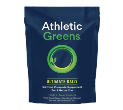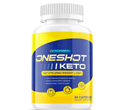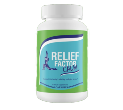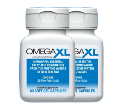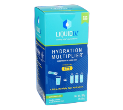Optimum Nutrition Gold Standard Reviews, Ingredients, Does It Work?
Edited and medically reviewed by ✔️ Team of BestInSupplements | Written by Katelyn Johnson (B.S. and M.S. in Nutrition Science)
Optimum Nutrition is a trusted brand in the nutrition world. Before you commit to purchase, read our review about their Gold Standard protein supplements ingredients, health benefits, uses, and safety.

Optimum Nutrition is a major nutritional supplement company that has been in business for decades and has a large product line that is available all over the world. Their flagship Gold Standard 100% whey protein is popular among fitness fanatics as well as anyone searching for a decent protein supplement in general.
Protein is required for muscle growth, strength enhancement, weight loss, and a variety of other biological processes 1. As a result, ensuring that you consume enough on a daily basis is critical for reaping the advantages.
This review is part of: The Best Pre-Workout Supplements You Can Buy
Taking Optimum Nutrition Gold Standard whey protein will provide you with a protein and amino acid boost that your body requires while on the road, at the gym, running errands, and living life.
Here You Will Discover More About:
Optimum Nutrition Gold Standard Benefits
Although there are numerous benefits to incorporating this protein supplement into your everyday regimen, many of this product's advantages stem from the fact that it contains whey, a high-quality protein that is rich in Branched Chain Amino Acids (BCAAs) and the non-essential amino acid glutamine 2.
Protein supplementation has been shown in multiple studies to be beneficial for growing fat-free muscle mass, muscle maintenance, weight/fat loss, satiety, enhancing strength and power, and just improving overall physical performance 3,4.
Whey protein contains a high concentration of amino acids, including leucine, the most important amino acid for increasing protein synthesis, which is required for muscle building 5. Amino acid supplementation reduces muscle discomfort and recovery times, allowing you to grow more quickly 5.
And, because whey is a fast-absorbing form of protein, studies have shown that it has a better initial effect for muscle protein synthesis than a slower-digesting form of protein found in food sources 6.
But protein isn't merely a "superficial" macronutrient that will help you lose weight. It is an important component of every human cell and plays a function in the formation and repair of almost all bodily tissue. It is also necessary for hormone regulation, metabolic processes, and enzyme creation 7.
There is enough evidence to suggest that protein intake is particularly good for optimizing performance and recovery following resistance and endurance training. Pre- and post-workout protein ingestion is the greatest approach to ensure you have enough protein to fuel your workout and/or weight loss goals 5.
Take a look at this alternative: Alani Nu Pre-Workout Reviews, Ingredients, Does It Work?
According to one study, whey protein with leucine and a fast-digesting carb source is an excellent post-workout combination since leucine cannot control protein synthesis as efficiently in the absence of insulin. The same study discovered that pre-workout essential amino acid and glucose ingestion is most helpful for stimulating protein synthesis 8.
As a result, Optimum Nutrition Gold Standard whey protein consumption is beneficial for maximizing protein synthesis.
Optimum Nutrition Gold Standard Ingredients

The ingredients list is surprisingly short for something so popular and inexpensive.
Whey Protein Blend
- Whey Protein Concentrate (WPC)
- Whey Protein Isolate (WPI)
- Hydrolyzed Whey Peptide (HWP)
These proteins are distinguished by their different molecule sizes and, as a result, digestibility in the gastrointestinal tract. The smaller the molecule size, the easier it is to digest the protein. Each type of whey has advantages and disadvantages, so combining them all is a wise strategy.
Whey Protein Isolate (WPI)
Whey Protein Isolate has the highest percentage of protein of the three types of whey, but the process used to make it removes many of the other ingredients that can promote overall health and immunity, such as peptides 9.
Whey Protein Concentrate (WPC)
Whey Protein Concentrate is the least expensive form of whey. While it contains less protein and more fat per gram than isolate and peptides, it contains more ingredients with potential health benefits such as conjugatedlinoleic acid (CLA) and phospholipids 10.
Hydrolyzed Whey Peptides (HWP)
Hydrolyzed Whey Peptides are more expensive, but they are also more broken down — some call it "pre-digested" — and thus absorb faster.
Whey protein isolate is also higher in BV (biological value) than whey protein concentrate. As a result, some may conclude that whey protein concentrate is "filler" or "inferior" to isolate because its biological value is lower. However, a high-protein diet, whether from concentrate or isolate, will produce similar results 11.
Gold Standard is severely lacking in additives - which is an extremely good thing and rare in many protein supplements.
Each serving totals 30.4 grams. Further breakdown shows whey protein blend equals 24 grams and additives equal 6.4 grams (all of which primarily contribute to the product's flavor).
Lecithin is added to improve the powder's mixability.
Acesulfame Potassium is a synthetic sweetener - about 200 times sweeter than sugar. Although it’s use in supplements is controversial, it appears to have no negative effects at low levels 12.
Aminogen enzymes are a combination of enzymes that aid in protein digestion - and overall digestion - as well as gas reduction.
Lactase is included to aid in the digestion of the whey concentrate's minor lactose content. If you are lactose intolerant, you should avoid this product.
Whey protein products, are generally safe to use by almost anyone. If you are lactose intolerant, these items may cause stomach upset. Although there is a possibility for consumers to experience some minor side effects, in general, they are common in protein supplements.
Users may notice an increase in bowel motions, nausea, upset stomach, gas or bloating, exhaustion, cramps, or a decrease in appetite. These symptoms will usually go away as your body adjusts to protein supplementation.
However, if they are severe, you should stop using it and try something different. Again, if you have a lactose intolerance, look for a plant-based protein powder that is lactose-free.
Who Should Buy Optimum Nutrition Gold Standard?
This protein powder supplement should be a top contender for those looking for a general-purpose protein powder.
Gold Standard is ideal for those looking to bulk up or those on a training program looking to increase strength and endurance. This is where this product excels by providing effective performance at a reasonable price.
Discover more about this brand: Best Optimum Nutrition Supplements You Should Know
This protein powder may also be used by those looking to lose weight, though it is not specifically marketed for this purpose. It is also a recommended protein supplement for those who are new to using protein supplements.
That said, the whey component of Optimum Nutrition Gold Standard may not meet the demanding expectations of elite athletes who would require a pure isolate or hydrolysate.
Optimum Nutrition Gold Standard Review and Final Thoughts
Optimum Nutrition's Gold Standard whey protein powder may be the most well-known and widely consumed protein powder on the market. Optimum Nutrition Gold Standard 100% Whey has long been a best-seller and presently the world's #1 selling whey protein powder.
It is currently the best-selling protein powder supplement product on Amazon. With over 17,500 reviews on Amazon alone, the feedback is consistent and straightforward.
Optimum Nutrition has a great yield, a good BCAA to EAA ratio, tastes great, mixes well, and delivers on its ability to help add muscle mass.
When compared to the competition, this is a solid product that provides exceptional value for money. It's a dependable, well-made protein powder supplement at a reasonable price. It offers a well-balanced protein blend that is ideal for post-workout or as a meal replacement for a variety of diets, including the ketogenic diet.
Where to Buy Optimum Nutrition Gold Standard
Optimum Nutrition whey protein tubs range in size from two to five pounds in a typical supplement store. The latter is around $60 for 73 servings. That works out to roughly 80 cents per serving or 3.4 cents per gram of protein. A standard two-pound tub costs around $30 for 29 servings. This works out to about $1 per serving or around $4 per gram of protein.

Frequently Asked Questions
References
- Westerterp-Plantenga M. S. (2008). Protein intake and energy balance. Regulatory peptides, 149(1-3), 67-69.https://doi.org/10.1016/j.regpep.2007.08.026
- Johnstone, A. M., Stubbs, R. J., & Harbron, C. G. (1996). Effect of overfeeding macronutrients on day-to-day food intake in man. European journal of clinical nutrition, 50(7), 418–430.
- Bosse, J. D., & Dixon, B. M. (2012). Dietary protein to maximize resistance training: a review and examination of protein spread and change theories. Journal of the International Society of Sports Nutrition, 9(1), 42. https://doi.org/10.1186/1550-2783-9-42
- Arciero, P. J., Ormsbee, M. J., Wildman, R. E., & Layman, D. K. (2019). Protein as a Functional Food Ingredient for Optimizing Weight Loss and Body Composition. In Handbook of Nutraceuticals and Functional Foods (pp. 245-265). CRC Press.
- Stark, M., Lukaszuk, J., Prawitz, A., & Salacinski, A. (2012). Protein timing and its effects on muscular hypertrophy and strength in individuals engaged in weight-training. Journal of the International Society of Sports Nutrition, 9(1), 54. https://doi.org/10.1186/1550-2783-9-54
- Hoffman, J. R., & Falvo, M. J. (2004). Protein - Which is Best?. Journal of sports science & medicine, 3(3), 118–130.
- Bojarska, J., Kaczmarek, K., Zabrocki, J., & Wolf, W. M. (2019). Amino Acids: Molecules of life. Int. J. Nutr. Sci, 4, 1035-1037.
- Stark, M., Lukaszuk, J., Prawitz, A., & Salacinski, A. (2012). Protein timing and its effects on muscular hypertrophy and strength in individuals engaged in weight-training. Journal of the International Society of Sports Nutrition, 9(1), 54. https://doi.org/10.1186/1550-2783-9-54
- Phillips, Stuart M.; Van Loon, Luc J. C. (2011). “Dietary protein for athletes: from requirements to optimum adaptation”. Journal of Sports Sciences. 29 Suppl 1: S29–38. doi:10.1080/02640414.2011.619204.
- Singh, R. (2018). Nutrition for exercise and sport performance. International Journal of Yogic, Human Moviment and Sports Sciences, 3(1), 1229-1231.
- Cintineo, H. P., Arent, M. A., Antonio, J., & Arent, S. M. (2018). Effects of protein supplementation on performance and recovery in resistance and endurance training. Frontiers in nutrition, 5, 83.
- Mora, M. R., & Dando, R. (2021). The sensory properties and metabolic impact of natural and synthetic sweeteners. Comprehensive Reviews in Food Science and Food Safety, 20(2), 1554-1583.
Every editorial product is independently selected, though we may be compensated or receive an affiliate commission if you buy something through our links.
Recently Purchased


